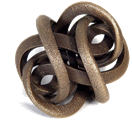Annotation:Duke of Perth: Difference between revisions
No edit summary |
*>Move page script m (moved Talk:Duke of Perth to Annotation:Duke of Perth) |
(No difference)
| |
Revision as of 13:56, 15 April 2012
Tune properties and standard notation
DUKE OF PERTH. AKA and see "Broom's Reel," "Duke of Riff's Reel," "Fashion o da Delting Lasses (Da)" (Shetland), "Lolly Pops and Bulls Eyes," "Lord Rockingham's Reel," "Love in a Village (3)," "McDonald's Reel," "Scam(p)den's Cade." Scottish, Reel. G Major. Standard tuning (fiddle). AB (Surenne): AAB (Athole, Gow, Johnson): AABB (Bremner, Emmerson, Johnson, Kerr, Sweet). Johnson (1983) finds an early version of this famous piece in Neil Stewart's Reels (1761) and believed it to have been written in the mid-18th century. Glen (1891) states the earliest printing is in Robert Bremner's 1757 collection, however, Emmerson (1971) finds the earliest written record in David Young's 1734 Drummond Castle Manuscript (also called the "Duke of Perth Manuscript"). Another early version is to be found in the 1768 Gillespie Manuscript of Perth. Although called a reel the tune meets the criteria for a rant, however, it is now mostly played at a considerably slower tempo as a Scottish measure or country dance in 2/4 time. The Scottish country dance performed to the tune was also called Duke of Perth and was very popular around Angus, East Fife and Perthshire, note Flett & Flett (1964), to the extent that it was a feature at various hunt balls in the region. The dance The Duke of Perth is also called Brown's Reel and both these names were used in Perthshire, East Fife and Angus. The same steps went by different names elsewhere in Scotland, to which other tunes were played; in the upper parts of Ettrick it was called Keep the Country, Bonny Lassie, and in Lanarkshire, Ayrshire, Arran and Galloway it was known as Pease Strae.
The melody appears under a variety of titles in numerous British musicians' manuscripts of the late 18th and 19th century (see alternate titles), including the Thomas Hardy family manuscripts ("Duke of Riff's Reel"), James Biggins (Leeds, west Yorkshire, 1779), H.S.J. Jackson (Wyresdale, Lancashire, 1823), the Welch family manuscripts (Bosham, Sussex), the Tiller manuscript, Docker, William Vickers (Northumberland, 1770), and David Young (1734, as noted above). The melody may have been used by Arne and Bickerstaffe for their ballad opera Love in a Village (1762), although the tune seems to have appeared widely before that date (according to Barry Callaghan, 2007).
Perhaps the most famous Duke of Perth was the Jacobite commander Drummond, originally the Earl of Perth. Drummond had declared for the Stewarts in the rising of 1715, following which he escaped to the Continent. He retained his title and was raised to the Dukedom by King James, later serving Prince Charles as first Lieutenant-General. The Duke proved to be an able commander, and despite a delicate constitution, he weathered the hardships of campaigning well, fought with boldness and in victory was merciful. Passed over for the highest command in favor of Lord George Murray, Drummond nevertheless remained with the army in support. After the Jacobite defeat at Culloden he embarked again for France, but died on the passage in May, 1746. A famous pipe pibroch called "The Duke of Perth's March" was composed in his honor by Finlay Dubh MacRae of Kintail to commemorate the march of the rebel army to attack the forces under Sir John Cope at Prestonpans.
Source for notated version: Stewart's Reels (c. 1761-5) [Johnson]; Gow (Complete Repository, Part First) [S. Johnson/2003].
Printed sources: Bremner ('A Collection of Scots Reels), 1757; p. 8 (appears as "Duke of Perth's Reel"). Emmerson (Rantin' Pipe and Tremblin' String), 1971; No. 41, p. 136. Gow (Complete Repository), Part 1, 1799; p. 15. Johnson (Scottish Fiddle Music in the 18th Century), 1984; No. 72, p. 223. S. Johnson (The Kitchen Musician No. 10: Airs and Melodies of Scotland's Past), 1992 (revised 2001); p. 18. S. Johnson (A Twenty Year Anniversary Collection), 2003; pg. 38. Kennedy (Traditional Dance Music of Britain and Ireland: Reels and Rants), 1997; No. 40, p. 11. Kerr (Merry Melodies), vol. 1; Set 16, No. 4, p. 11. Petrie (Second Collection of Strathspey Reels and Country Dances), 1796; p. 6. Stewart-Robertson (The Athole Collection), 1884; p. 171. Surenne (Dance Music of Scotland), 1852; p. 25. Sweet (Fifer's Delight), 1964/1981; p. 56. Wilson (Companion to the Ball Room), 1815; pg. 80.
Recorded sources: Tradition 2118, Jim MacLeod & His Band - "Scottish Dances: Jigs, Waltzes and Reels" (1979).
See also listings at:
Alan Snyder's Cape Breton Fiddle Recording Index [1]
Jane Keefer's Folk Music Index: An Index to Recorded Sources [2]
